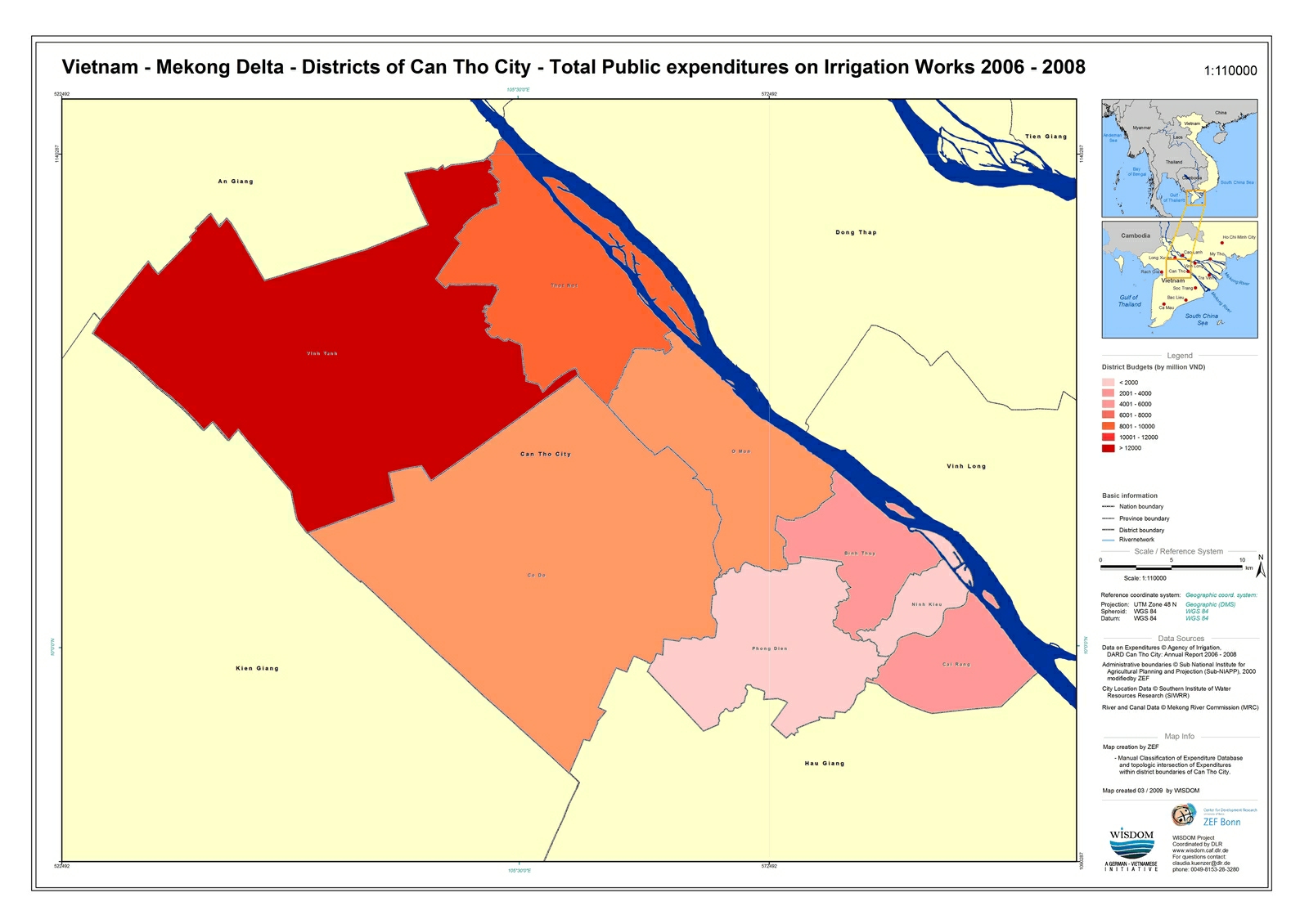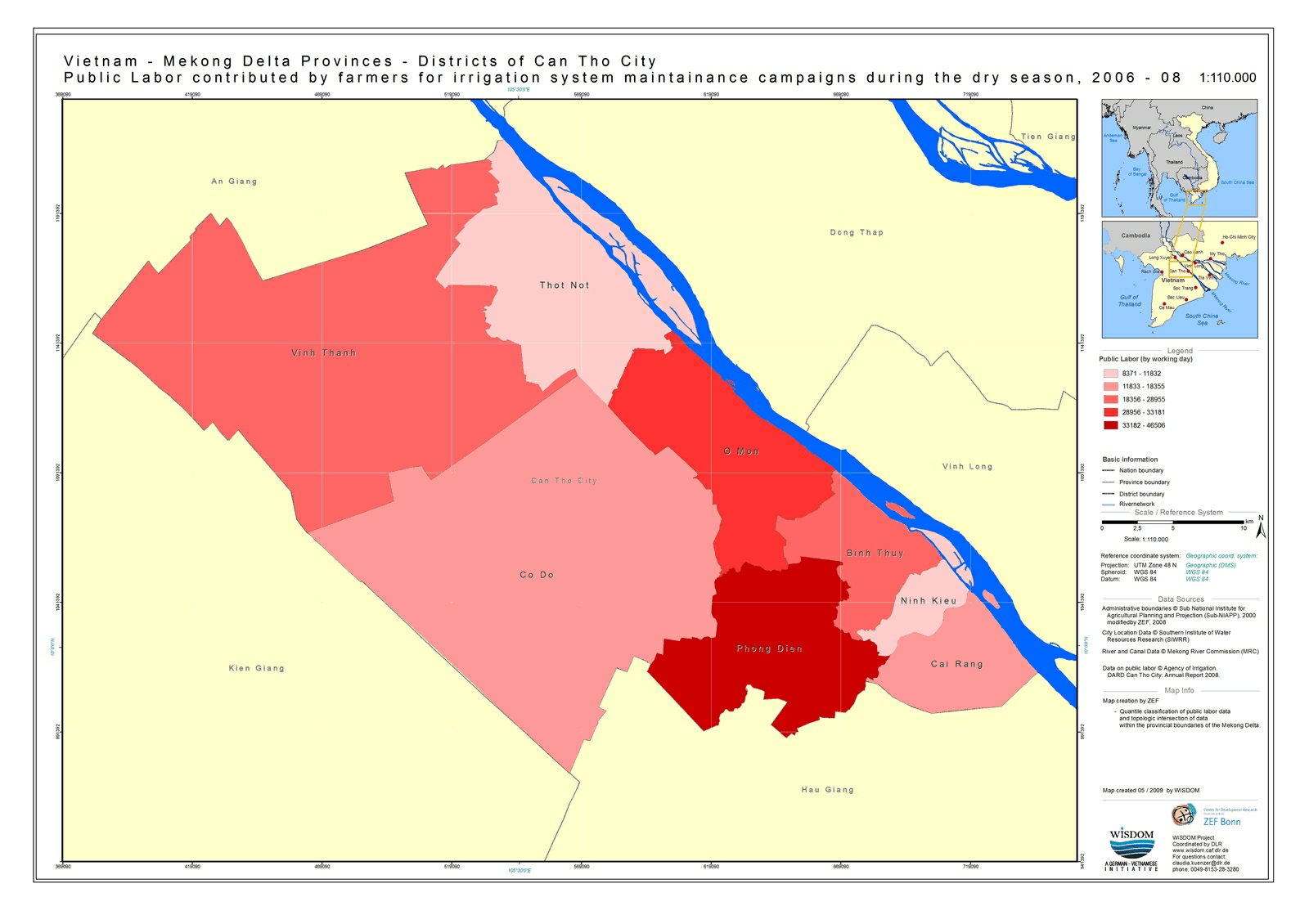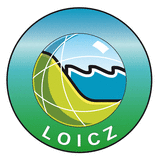Can Tho City - Hydraulic Management, 2006 - 2008
During the past decades, hydraulic engineering and management have been crucial for the Mekong Delta’s agricultural production growth. A number of canals, dykes and sluices have been constructed and pumping stations have been set up. These infrastructure investments serve various purposes, but water supply for irrigation, flood control (in the upper delta) and the prevention of salinity intrusion in the coastal zone are the most important.
Today, hydraulic works in the delta are managed by a complex administrative system. This includes state management agencies at different administrative scales, as well as irrigation and drainage companies in some of the provinces. Responsibilities are shared according to the size and scale of the constructions. For instance, large canals crossing provincial boundaries (canals category I) can be managed by the Ministry of Agriculture and Rural Development (MARD) in Hanoi or by its respective agency in the provincial administration (Department of Agriculture and Rural Development). Smaller canals of category II and III are generally managed by district authorities (Office of Agriculture and Rural Development). Each of the administrative units receives a budget for maintenance and construction, according to its annual plan. Smaller hydraulic works such as on-field irrigation canals and dykes are managed by farmers groups themselves. They are organized in agricultural cooperatives or other cooperative groups at the hamlet level and also contribute labor and funds to maintain their activities.

Between 2006-2008 the province of Can Tho City spent about 80 billion VND (4.5 million USD) for the maintenance and expansion of its irrigation network. About half of the funds were spent on irrigation works of category II and III, placed under the management of district authorities. The lion share of these funds flew into the districts of Vinh Thanh and Thot Not, in the northern part of Can Tho. This area is the most affected by rising water levels during the wet season and therefore has a comparatively high demand for hydraulic management.

Soil sedimentation in river and canal beds occurs throughout the delta. With regard to irrigation, this constitutes a major problem since sedimentation leads to water supply constraints. As a preventive measure, canals have to be dredged every 6 to 7 years. This is normally organized during the dry season when water levels in the canals are low. Formerly, farmers were mobilized to dig by hand and huge irrigation labor campaigns reassembled thousands of people to take part in the exercise. Today dredging is mostly done by deploying machines, especially for the large canals. Though mechanization has reached the rural areas, labor input provided by farmers has not totally vanished; it is still required for the preservation of irrigation canals of category III and other smaller on-field canals. Recent statistics show that within the period of 2006 to 2008, farmers of Can Tho City provided a total of 182 000 days of public labor invested in canal dredging. The labor force recruitment has been the highest in Phong Dien (46 000 days) and O Mon (33 000 days), respectively. During the same time, both districts have made comparatively small financial investments into the hydraulic sector.




